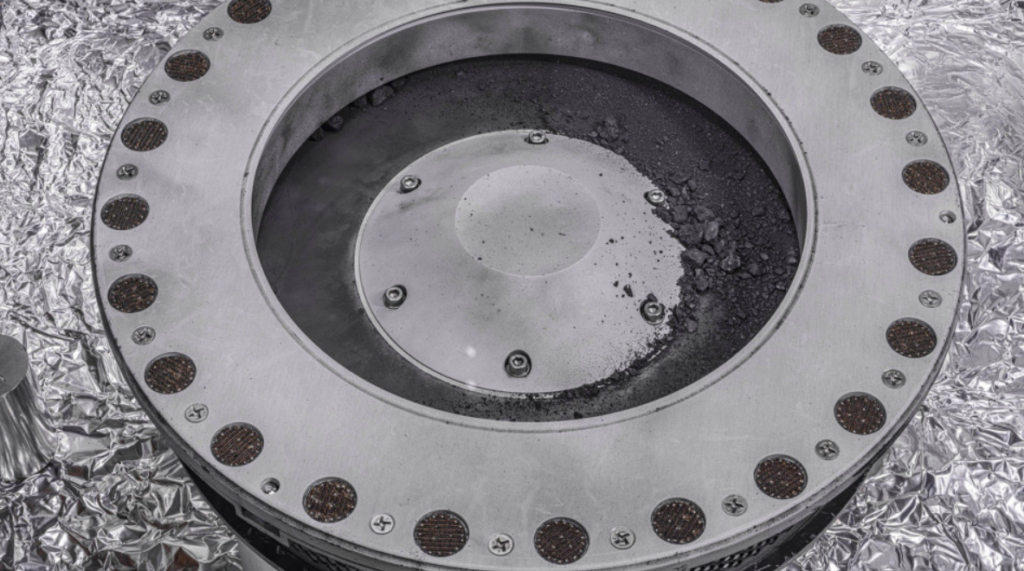

Lately, asteroids have lost a great deal of their mystery. NASA’s OSIRIS-REx spacecraft has successfully brought a substantial amount of asteroid regolith to Earth, after the successful landing of robots on a space rock by a Japanese mission that also took a small sample for future use. A few weeks after the mission’s landing, NASA unveiled the mission’s sample on Wednesday. According to the organization, Bennu, an asteroid, is rich in water and carbon, which may indicate that it contains the elements necessary for life.
Seven years ago, OSIRIS-REx was launched on its journey to the near-Earth asteroid 101955 Bennu. This space rock is approximately 1,610 feet (490 meters) in diameter and is a carbonaceous asteroid. The mission entered Bennu’s orbit in 2018 and made a surface landing to collect a sample in 2020. NASA received far more material than the minimum 60g that it had hoped for.
NASA notes that OSIRIS-REx’s sampling mechanism performed significantly better than anticipated. The scientists discovered a lot of dust and rocks scattered everywhere when they opened the return capsule (see above). The sample’s opening and cataloging process has slowed as a result. NASA does not have a complete accounting of the payload as a result. Though, considering all the “bonus material” NASA has discovered inside the capsule, it’s more likely closer to the 60g minimum than the 2-kilogram ceiling.
NASA transported the sample to Johnson Space Center in Houston following the lander’s recovery from the Utah desert. To avoid contamination, experts have sealed the container within a clean room there. The team has carried out some initial examination, including electron microscopy, infrared measurements, X-ray diffraction, and chemical element analysis, as they meticulously rescue every particle of Bennu.\

Based on that research, NASA claims that Bennu’s interior is “diverse,” having a large amount of water and carbon compounds in addition to magnetite, which has the ability to catalyze organic reactions. “The OSIRIS-REx sample is the biggest carbon-rich asteroid sample ever delivered to Earth and will help scientists investigate the origins of life on our own planet for generations to come,” said Bill Nelson, administrator of NASA.
As NASA works to retrieve the Bennu sample, more information will become available. A portion of the content will be sent to colleges, other NASA labs, and foreign aerospace partners like JAXA. Additionally, small portions of the sample will be loaned to the University of Arizona, Space Center Houston, and the Smithsonian Institution for public exhibition. The majority of it will be kept in storage, though. Seventy percent of the returned material is intended to be stored by NASA for analysis by scientists using more sophisticated technology in the future.